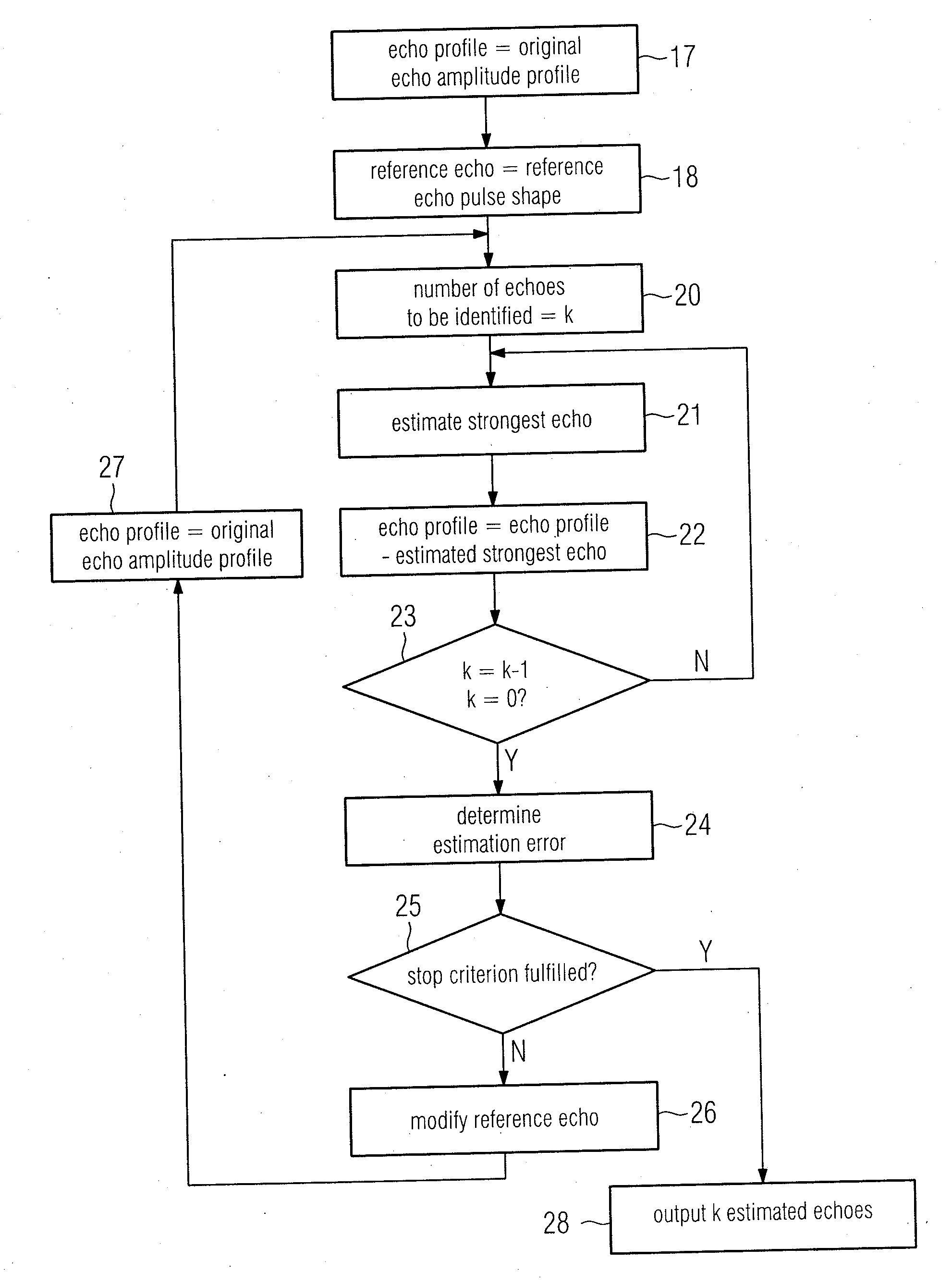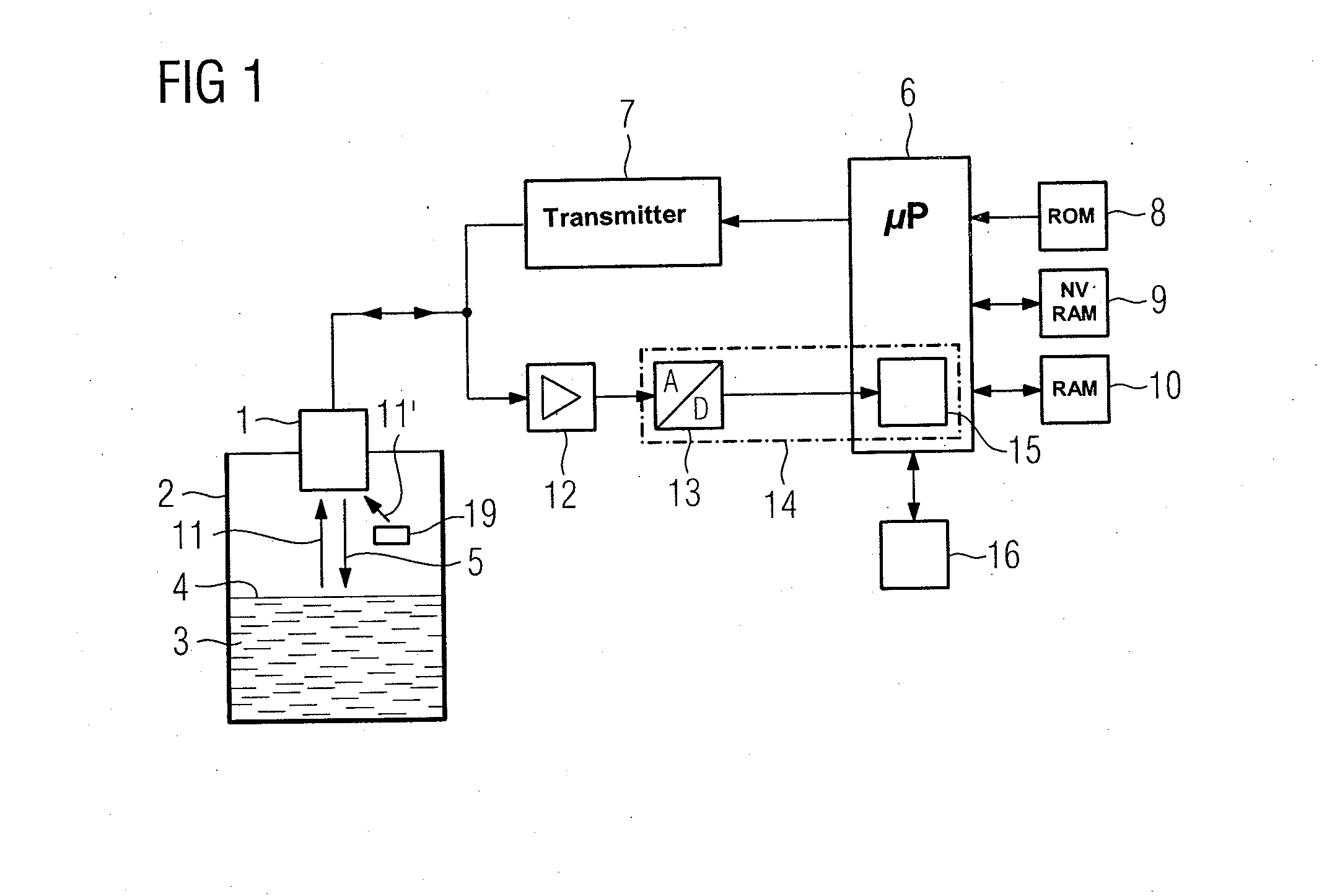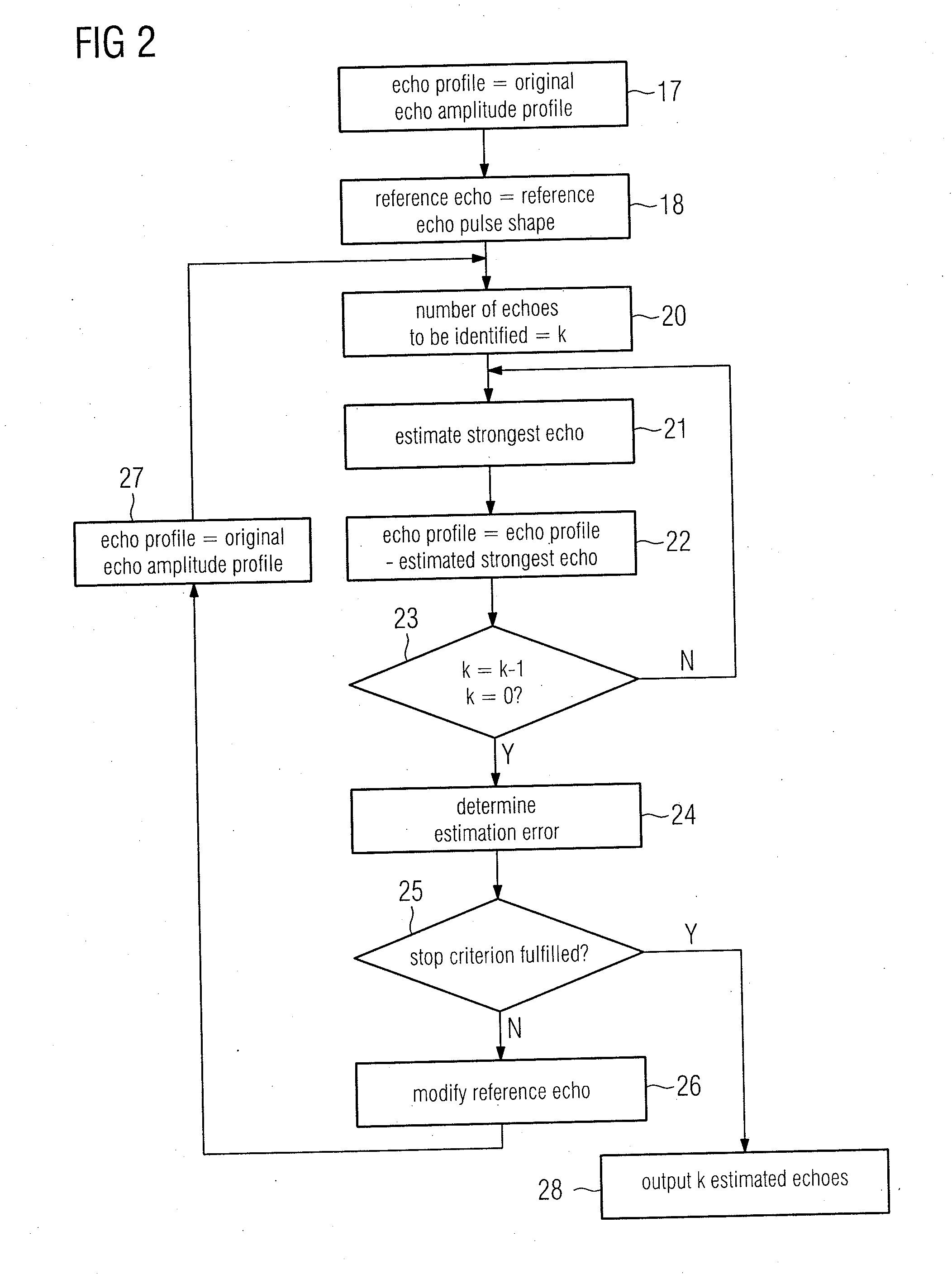Method for Processing an Echo Amplitude Profile Generated by a Pulse-Echo Ranging System
a pulse-echo ranging and echo amplitude technology, applied in the field of pulse-echo ranging, can solve the problems of overlapping echoes, further distorted echoes, and the inability to accurately estimate the level based on a single echo
- Summary
- Abstract
- Description
- Claims
- Application Information
AI Technical Summary
Benefits of technology
Problems solved by technology
Method used
Image
Examples
Embodiment Construction
[0029]With initial reference to FIG. 1 shown therein is a simplified schematic block diagram of a pulse-echo ranging system that may be ultrasonic or radar based. The system comprises an acoustic or microwave transducer 1 that is installed in a tank 2 containing a liquid 3, or other type of material, with a level determined by the top surface 4 of the liquid 3. The top surface 4 of the liquid 3 provides a reflective surface that reflects ultrasound or radar pulses 5 generated by the transducer 1. The transducer 1 is coupled to a microprocessor 6 through a transmitter 7. The microprocessor 6 operates under a control program stored in read-only memory (ROM) 8, utilizing parameters stored in non-volatile random access memory (NVRAM) 9, and provided with a working memory in the form of random access memory (RAM) 10.
[0030]The microprocessor 6 controls the transmitter 7 to excite the transducer 1 to emit the ultrasound or radar pulses 5 at predetermined points in time and with at a predet...
PUM
 Login to View More
Login to View More Abstract
Description
Claims
Application Information
 Login to View More
Login to View More - R&D
- Intellectual Property
- Life Sciences
- Materials
- Tech Scout
- Unparalleled Data Quality
- Higher Quality Content
- 60% Fewer Hallucinations
Browse by: Latest US Patents, China's latest patents, Technical Efficacy Thesaurus, Application Domain, Technology Topic, Popular Technical Reports.
© 2025 PatSnap. All rights reserved.Legal|Privacy policy|Modern Slavery Act Transparency Statement|Sitemap|About US| Contact US: help@patsnap.com



